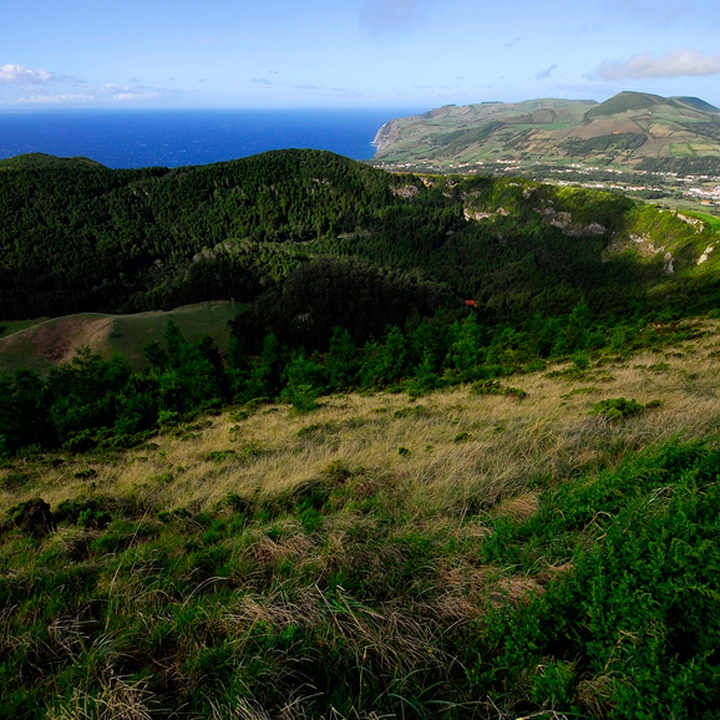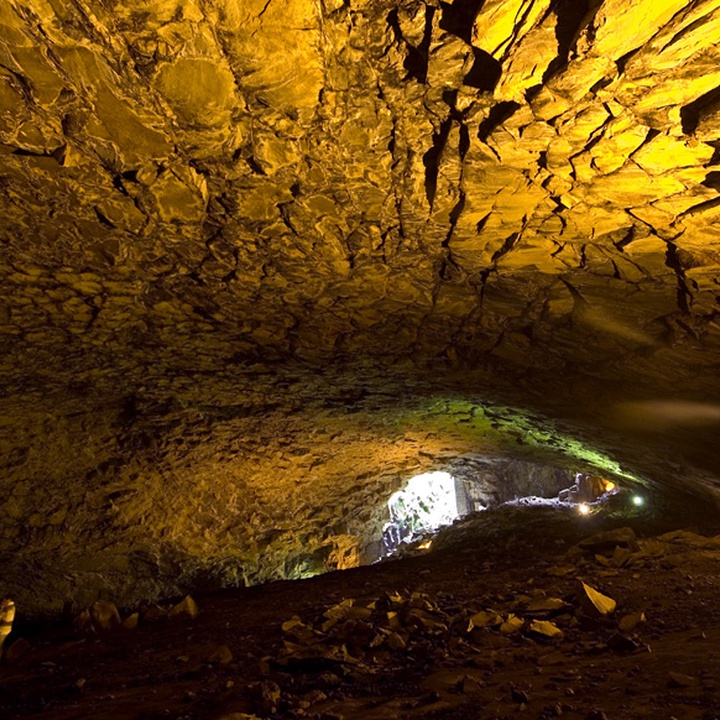Text size:
Caldeira da Graciosa
Natural Monument
Classified as a Natural Monument in 2008, the Caldeira da Graciosa has 119.87 hectares and corresponds to an oval volcanic depression area localized on the southeast part of the island.
Formed about 12 thousand years ago, it is a high-interest geological structure with several types of volcanic formations, such as the various lava tubes, of which Furna da Maria Encantada and Furna do Calcinhas stand out, two small hydromagmatic cones and a marshy area. However, Furna do Enxofre stands out from the other formations as a valuable landmark of the island's geodiversity, which is one of the most remarkable volcanic cavities in the Archipelago and unique in the international panorama. It is also rich in biodiversity, hosting several endemic flora and fauna species.
Caldeira da Graciosa is a collapse caldera of elliptical shape, with an area of 120 hectares and a depth of 270 metres, being the second largest forest and the highest elevation of Graciosa with 405 metres.
The origin of Furna do Enxofre is associated with the formation of a lava lake inside the caldera, which overflowed to the northwest, originating other caves, such as Furna da Maria Encantada. Furna do Enxofre also has a cold-water lagoon and a fumarolic field, with carbon dioxide emissions and a mud fumarole. It has an arched roof, with a maximum length of 194 metres and about 50 metres of height in the central area.
The caldera’s interior has abrupt walls, only softened at the bottom due to the slope deposits covered by endemic vegetation such as Azorean Heather (Erica azorica), Azorean Laurel (Laurus azorica) and Azorean St. John's Wort (Hypericum foliosum), by the autochthonous Firetree (Morella faya) and mainly by the introduced species Japanese Cedar (Cryptomeria japonica) and Australian Blackwood (Acacia melanoxylon).
In this habitat lives the only native mammal species of the Azores, the Azorean Bat (Nyctalus azoreum), the endemic bird Azores Chaffinch (Fringilla moreletti), as well as the endemic passerine subspecies Eurasian Blackcap (Sylvia atricapilla atlantis), Azores Grey Wagtail (Motacilla cinerea patriciae), Azores Blackbird (Turdus merula azorensis) and the Azores Common Starling (Sturnus vulgaris granti), and other important endemic subspecies as the Azores Woodpigeon (Columba palumbus azorica) and the Common Buzzard (Buteo buteo rothschildi). It is also one of the few places on Graciosa where it is possible to observe the waders Common Snipe (Gallinago gallinago) and Woodcock (Scolopax rusticola).
This protected area is classified as Wetland of International Importance by the Ramsar Convention (Ramsar Site) and Nucleus Zone of the Biosphere Reserve, and constitutes the Caldeira and Furna do Enxofre priority geosite of the Azores UNESCO Global Geopark.




